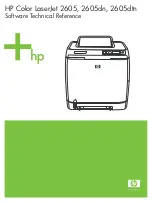
Definition Attributes
Data Definition Language (DDL) Reference Manual — 426798-002
6- 73
UPSHIFT Clause
UPSHIFT Clause
The UPSHIFT clause specifies that ASCII characters entered into a field must be
upshifted
.
UPSHIFT Clause Guidelines
The following points are guidelines for using the UPSHIFT clause:
•
Requesters generated by the Pathmaker product translate lowercase characters
entered into this field to uppercase characters; user-written programs must be
coded to enforce UPSHIFT.
•
You cannot use the UPSHIFT clause for numeric or computational fields. If a
definition or description for such a field contains UPSHIFT, DDL sends an error
message and does not enter the definition or record into the dictionary.
•
UPSHIFT can be associated only with elementary items in RECORD or
DEFINITION statements.
•
A field can have a MUST BE clause and an UPSHIFT clause. If these clauses are
used together, the MUST BE string must be upshifted.
•
A field can have both a VALUE clause and an UPSHIFT clause. If these clauses
are used together, you must specify any alphabetic characters in the VALUE
clause as uppercase.
•
An UPSHIFT clause cannot be specified in a definition or record that includes the
REDEFINES clause.
•
If a definition refers to a definition that includes the UPSHIFT clause, the referring
definition inherits the UPSHIFT attribute.
•
You cannot specify the upshift clause for a national data item.
UPSHIFT Clause Example
The following example shows UPSHIFT used in a DEFINITION statement:
DEF name.
02 first PIC X(20)
UPSHIFT .
02 middle PIC X(15)
UPSHIFT .
02 last PIC X(20)
UPSHIFT .
END
UPSHIFT
















































